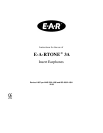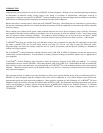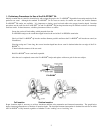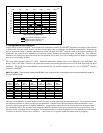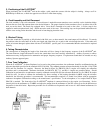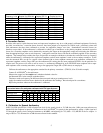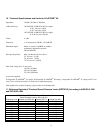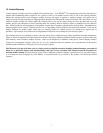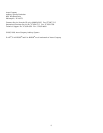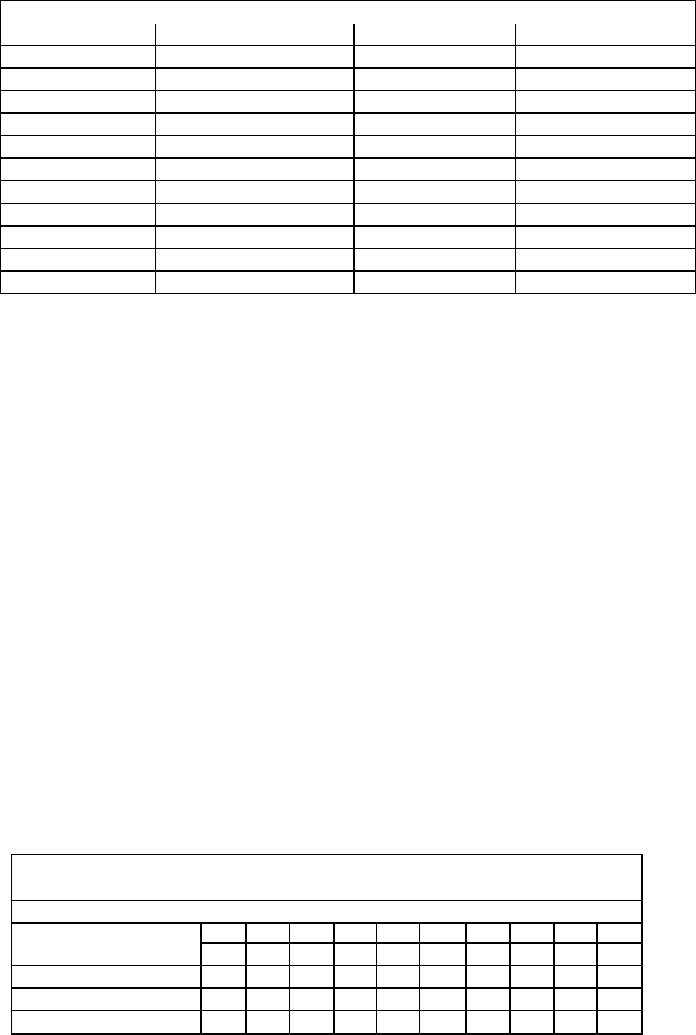
5
ANSI S3.6-1996 and ISO 389-2:1994 Calibration Values
Frequency in Hz Coupler 2cc DB-0138 Coupler IEC 711 Coupler 2cc HA-1
125 96.0 98.0 96.5
250 84.0 87.5 84.5
500 75.5 79.5 76.0
750 72.0 76.0 72.0
1000 70.0 75.5 70.0
1500 72.0 79.5 70.0
2000 73.0 81.5 72.5
3000 73.5 83.0 72.5
4000 75.5 85.0 70.0
6000 72.0 86.0 67.5
8000 70.0 85.5 66.5
8. Correction Factors
Providers who need to switch between insert and supra-aural earphones may do so with properly calibrated equipment. Previously
provided “out-of-the-box” correction factors, however, have been judged to be imprecise for clinical work, particularly when used
with audiometers that have been calibrated to account for equipment changes over time. Standardized correction factors are
therefore not provided. If the audiometer is calibrated for either type of transducer as the primary earphone, measured correction
factors for a secondary earphone can be obtained by measuring the output on the appropriate coupler and calculating the difference
from the appropriate target value at each frequency. Audiogram correction factors can then be confidently applied for the secondary
earphone. The example below outlines the steps, and provides an example worksheet to calculate the correction factors by frequency
where the audiometer is calibrated with a supra-aural earphone, and an insert earphone is used as the secondary transducer. In this
case, the measured SPLs are the 2cc coupler values obtained with an insert earphone connected to an audiometer calibrated for a
supra-aural earphone, and the Target SPLs are the audiometer HL setting plus the insert earphone RETSPLs for the particular 2cc
coupler used. The process will work as well in reverse, i.e. audiometer calibrated for an E-A-RTONE insert earphone with a supra-
aural earphone as the secondary transducer, as long as the appropriate Target SPLs (TDH values) are employed.
Calibrate the audiometer to the appropriate standard for the primary transducer. (TDH-39, 49 or 50 in this example)
Connect E-A-RTONES
®
to the audiometer.
Measure the output in a 2cc coupler and substitute obtained values for
the Measured SPLs in the example worksheet below
Tabulate at each test frequency the difference between actual and target sound pressure levels.
Apply the rounded correction factors obtained to the audiometer dial readings. Record and post for convenience.
Repeat the procedure whenever the audiometer is calibrated.
Worksheet example for calculation of individual (insert earphone
correction factors for audiometer calibrated with TDH type earphone
Frequency in Hz
250
500
750
1000
1500
2000
3000
4000
6000
8000
Measured SPLs
90.5
76.8
74.1
72.0
73.4
77.5
79.3
76.5
63.7
58.0
Target SPLs*
84.0
75.5
72.0
70.0
72.0
73.0
73.5
75.5
72.0
70.0
Difference
6.5
1.3
2.1
2.0
1.4
4.5
5.8
1.0
-8.3
-12.0
Rounded Correction
5 0 0 0 0 5 5 0 -10 -10
*Target SPLs = audiometer HL + RETSPL
9. Calibration for Speech Audiometry
ANSI S3.6-1996 specifies the 1 kHz reference-tone level for the speech circuit as 12.5 dB above the 1 kHz pure-tone reference test
threshold for the earphone in question. Calibration of the E-A-RTONE
®
for speech is thus performed by setting a 1 kHz signal at 0
VU through the speech circuit, setting the attenuator to 60 dBHL, and adjusting for 72.5 (60.0 + 12.5) dB SPL in the 2cc coupler. A
range of 69.5 to 75.5 dB meets the ±3 dB tolerance allowed in the standard.



